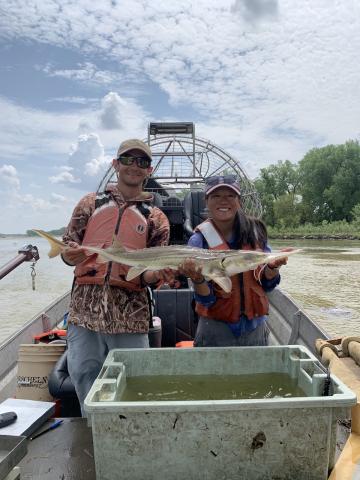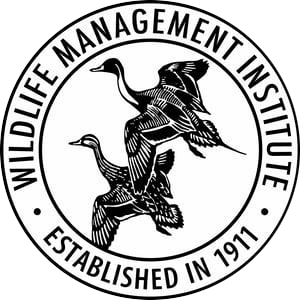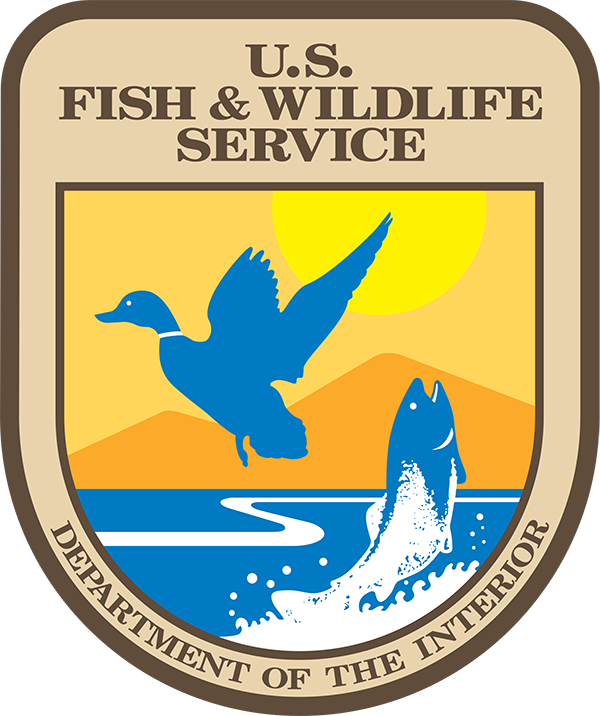Pallid Sturgeon is a long-lived (i.e., > 50 years) species that historically occupied a large proportion of the Mississippi River basin including the mainstem Missouri River and its large tributaries. Pallid Sturgeon possesses a life-history strategy that enables individuals to maximize contributions of offspring to future generations through aligning spawning events with environmental conditions that support larval drift, survival, and recruitment to the population. However, Pallid Sturgeon do not spawn until they are many years old (i.e., 10 – 20 years), do not spawn annually when sexually mature, and reach relatively old ages. Pallid Sturgeon have undergone declines in abundance and distribution resulting in listing as a federally endangered species. The present distribution of Pallid Sturgeon is truncated due to multiple environmental stressors including lack of connectivity from dams or other flow-control structures that block movements. Furthermore, minimal recruitment of Pallid Sturgeon has occurred within the lower Missouri River as habitat conditions within the system may limit survival of drifting larvae and limited habitat for post-larval stages may exist in altered mainstem channels. Extensive hatchery supplementation of Pallid Sturgeon has occurred to stabilize population loss and potentially increase the number of reproductively viable adults to a level where natural reproduction can result in recruitment. However, a fundamental understanding of habitat needs of spawning adults across different systems as well as the role of different habitat types in enhancing survival of young is limited. Studies to inform recovery efforts to date have focused on gaining a better understanding of life-history requirements, population dynamics, habitat use, and propagation in the mainstem Mississippi and Missouri rivers. However, limited work has been done to understand the role of tributaries to fill data gaps in the recovery process. Therefore, there is a large need to provide details on Pallid Sturgeon populations and reproduction success in areas where they are not currently being evaluated. For example, the Platte River is frequently used by Pallid Sturgeon and may be important to species abundance, seasonal distribution, and reproductive ecology. The goal of this project is to fill knowledge gaps about lower Platte River contributions to Pallid Sturgeon spawning habitat, reproduction, recruitment, and population dynamics.
Goals
The Pallid Sturgeon is a U.S. Threatened species that primarily inhabits the Missouri River and lower Mississippi rivers. Ongoing work in the main stems of large rivers has provided much critical information regarding the biology and ecology of the species. However, substantial knowledge gaps exist regarding the species use and dependence on tributaries of the main stem Missouri and lower Mississippi rivers. This project is intended to assess habitat use and availability for Pallid Sturgeon in the Platte River, Nebraska. Additionally, this project will assess the occurrence of spawning behavior potential spawning success within the Platte River, Nebraska.

Graduate Student(s)
- Jenna Ruoss
- Christopher Pullano
Project Coordinator(s)
- Jonathan Spurgeon
- Mark Pegg
- Kirk Steffensen
Project Duration
September 2021-December 2026
Funding
Platte River Recovery Implementation Program
Project Location
Lower Platte River, Nebraska




